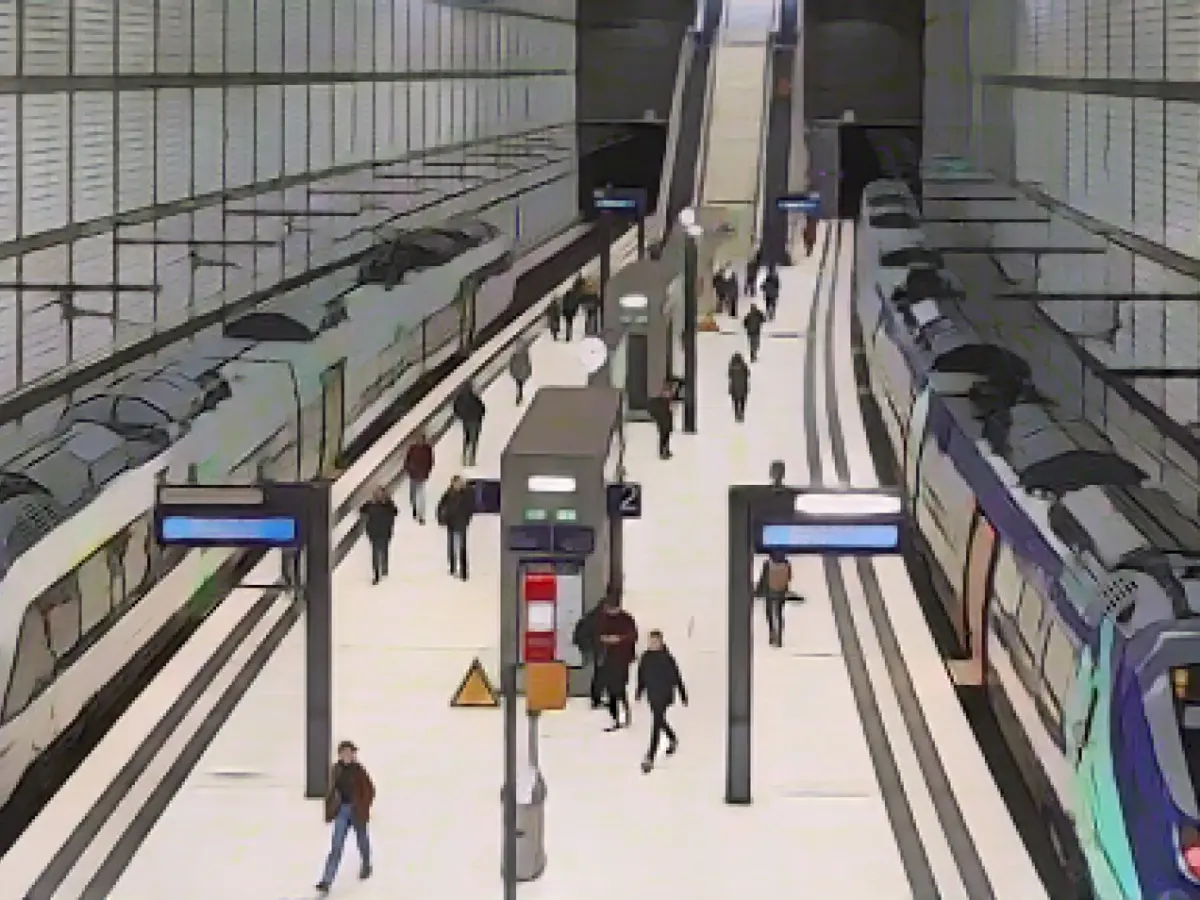Anniversary - Ten years of the City Tunnel and S-Bahn Central Germany
Ceremony for the Leipzig City Tunnel: With the completion of the approximately four-kilometer-long underground route, the new S-Bahn Central Germany also began operations on 15 December 2013. "The tunnel is the engine for development in the entire region," said Martin Walden, Deutsche Bahn's Group Representative for Saxony, Saxony-Anhalt and Thuringia, at Leipzig Central Station on Thursday. Around 90,000 passengers currently travel on the S-Bahn Mitteldeutschland trains every day.
Changes are planned for the S-Bahn Mitteldeutschland from 2026. According to Deutsche Bahn, only some of the lines will then be operated by DB Regio, while the private rail company Netinera, to which Länderbahn belongs, will take over other routes. The contracts with the companies involved were signed on Thursday. The connections from Leipzig to Döbeln and Riesa as well as Plauen in Vogtland were newly awarded.
Then 75 new battery-powered trains will also be put on the rails in the Central German S-Bahn network. "With the delivery of the Mireo trains, we are enabling greater flexibility for public transport in Central Germany, higher capacity per train and more comfort for passengers," said Gerhard Greiter, Head of North East and Eastern Europe at Siemens Mobility. This is a step further towards a turnaround in rail transportation, with more space and better equipment making rail transport increasingly attractive.
The new trains will cover a total of 10.6 million train kilometers per year on the Central German S-Bahn network. According to Siemens Mobility, the order volume amounts to around 500 million euros. The trains each offer up to 200 seats, multi-purpose areas and a separate 1st class with leather seats. There is free WLAN, family areas and barrier-free travel.
The new era of local transport for the Leipzig/Halle economic region and the surrounding area began ten years ago with the completion of the City Tunnel. This major project took around ten years to complete. The costs rose considerably during this time, from an estimated 572 million euros to 960 million euros.
Information from Deutsche Bahn on the City Tunnel and 10 years of the Central German S-Bahn
Read also:
- A clan member is punished here
- Traffic lawyer warns: Don't talk to the police!
- Will he be convicted as Jutta's murderer after 37 years?
- He also wanted to kill his cousin
- The new S-Bahn trains, set to be introduced in the Central German network from 2026, will significantly impact the routes in Saxony-Anhalt and Thuringia, as DB Regio will operate only some lines, while Netinera, including Länderbahn, will take over others.
- The celebration of the 10th anniversary of the City Tunnel and the S-Bahn Central Germany in Leipzig was marked by the announcement of changes in traffic, with new connections to Döbeln, Riesa, and Plauen in Vogtland.
- The completion of the City Tunnel in Saxony led to a new era of local transportation in the Leipzig/Halle economic region and surrounding areas, significantly reducing traffic on Central German railroads.
- DB, the German railroad company, played a crucial role in the development of the region with the completion of the Leipzig City Tunnel, as stated by Martin Walden, DB's Group Representative for Saxony, Saxony-Anhalt, and Thuringia.
- From the Leipzig Central Station, DB operates the S-Bahn Mitteldeutschland, boasting over 90,000 daily passengers, thanks to the completion of the City Tunnel, marking a milestone in Central Germany's traffic infrastructure.
- The central location of Saxony within Central Germany makes it a strategic location for intercity traffic and a key area for DB's development projects, as demonstrated by the completion of the Leipzig City Tunnel and the subsequent S-Bahn operations.
Source: www.stern.de








